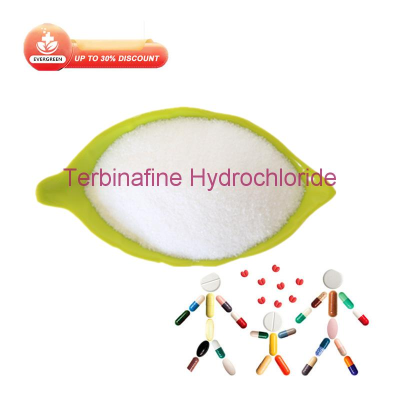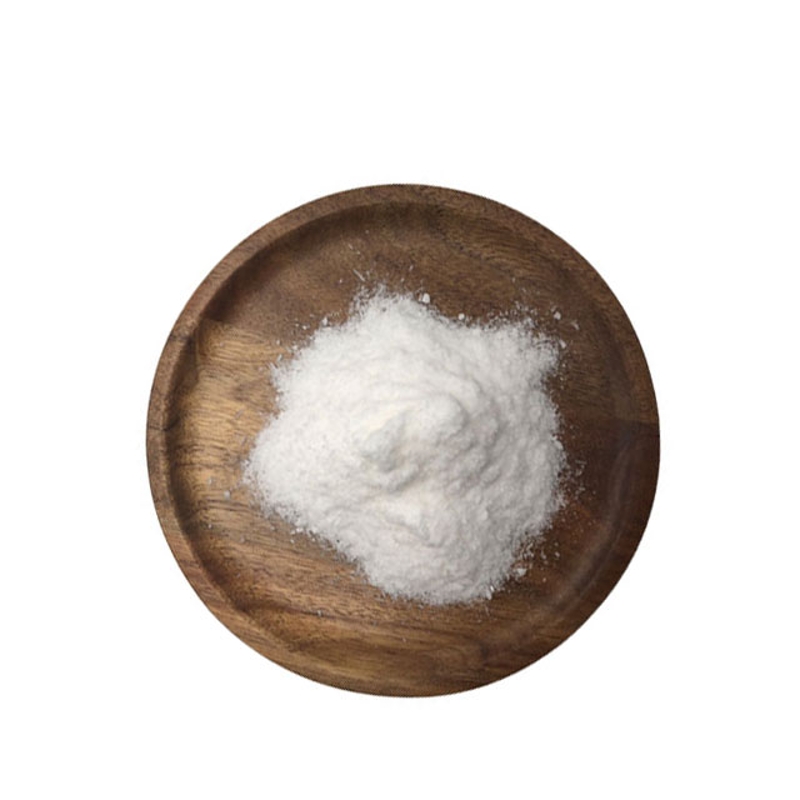-
Categories
-
Pharmaceutical Intermediates
-
Active Pharmaceutical Ingredients
-
Food Additives
- Industrial Coatings
- Agrochemicals
- Dyes and Pigments
- Surfactant
- Flavors and Fragrances
- Chemical Reagents
- Catalyst and Auxiliary
- Natural Products
- Inorganic Chemistry
-
Organic Chemistry
-
Biochemical Engineering
- Analytical Chemistry
- Cosmetic Ingredient
-
Pharmaceutical Intermediates
Promotion
ECHEMI Mall
Wholesale
Weekly Price
Exhibition
News
-
Trade Service
Author: Phylpenicillins are the first anti-infective drugs used clinically in the world.
They have the advantages of strong bactericidal activity, low toxicity, significant curative effect on sensitive bacterial infections, safety and economy.
With the widespread use of penicillin drugs and repeated long-term medication and the increasing dosage, there are more and more problems with medication.
1 Adverse reactions of penicillin drugs ➤Allergic reactions Penicillin is one of the drugs that are clinically very easy to cause allergic reactions, accounting for about 0.
7%-10% [1], and it causes many types of allergic reactions, such as: urticaria, blood vessels Neurological edema, cerebral edema, laryngeal edema, lymphadenopathy, transient proteinuria, drug fever, the most serious is anaphylactic shock, regardless of age.
➤Gastrointestinal reactions occur with piperacillin and amoxicillin drugs.
The symptoms were vomiting and healed spontaneously after stopping the drug.
Diarrhea can occur with oral penicillin preparations, often due to direct toxic effects, severely causing pseudomembranous colitis and acute hemorrhagic diarrhea.
➤Abnormal liver function mainly occurs with amoxicillin and penicillin potassium.
In mild cases, alanine aminotransferase and other abnormalities may occur, and in severe cases, cholestatic hepatitis may occur.
Therefore, patients with abnormal liver function should use it with caution, and pay attention to regular liver function checks.
➤Central nervous system reactions are clinically manifested as dizziness, which usually occurs with amoxicillin-clavulanic acid, sultacillin, piperacillin-tazobactam, penicillin sodium, penicillin potassium, piperacillin, the symptoms are mild, stop Symptoms disappeared after taking medicine, symptomatic treatment or switching to other medicines.
When penicillins are used in combination, symptoms of poisoning are more likely to appear.
➤Abnormal blood system can cause hemolytic anemia, neutropenia or leukopenia, etc.
High-dose medication can interfere with the coagulation mechanism and cause bleeding tendency.
For example, azlocillin and piperacillin can cause abnormal platelet function, and carbenicillin, ticarcillin, ampicillin, etc.
can cause abnormal platelet aggregation.
➤Double infections after long-term or high-dose use of penicillin antibiotics, penicillin-resistant Staphylococcus aureus, Gram-negative bacilli or Candida double infections may occur, especially when hormones or antimetabolites are used at the same time.
2 Tips for clinical application ➤ There is a cross-allergic reaction between penicillin drugs.
It should be used on-the-spot to prevent its hydrolysis and excessive production of allergens.
It is not necessary to increase the drug dose at will.
The use of large doses of penicillin can interfere with the coagulation mechanism and cause bleeding.
In severe cases, it may cause central nervous system poisoning and cause "penicillin encephalopathy.
"
➤Attach great importance to allergies.
Allergies are the most common and serious reactions of penicillins, with a probability of about 5%-10%.
Among them, anaphylactic shock is the most serious, which usually occurs within a few minutes after injection.
Other routes of administration, including topical medication and oral administration, may cause anaphylactic shock.
Therefore, before applying penicillin drugs, an allergy test must be performed, and only those who are negative can use the drug.
As a preventive measure, the patient’s history of allergies should be asked, the patient’s symptoms should be closely observed in the initial stage of application, rescue drugs should be prepared, and the indications should be strictly controlled.
➤Penicillin drugs are time-dependent bactericidal drugs.
When the concentration of the drug at the infected site reaches 50%-60% of the minimum inhibitory concentration (MIC) maintenance time, the bactericidal rate is the highest.
Therefore, different pathogenic bacteria should be targeted, and the method of administration and interval should be different, and multiple or continuous infusion should be adopted.
At the same time, studies have shown [2] that when the drug concentration is more than 4 times the MIC, increasing the dose will not significantly increase the efficacy, but will cause adverse reactions and drug resistance.
➤Penicillins are relatively stable in a near neutral solution with a pH of 6-7.
When a 5%-10% glucose injection with a pH of 3.
2-5.
5 is used as a solvent or diluent, it is easy to accelerate its decomposition; the higher the sugar concentration, the more degradation Fast, and its degradation products are also easy to induce allergic reactions. But using normal saline with pH 5-7 and compound sodium chloride solution as penicillin solvent, the stability is good.
In addition, the potency loss of penicillin solution was about 9% in 24 h at room temperature.
Therefore, the amount of diluent should not be too large during administration.
It is best to use a 50-100ml infusion solution, which can be dripped quickly within 0.
5-1h (the drip rate is 30-50 drops/min).
Not only can it increase its blood concentration in a short time, but it can also reduce its decomposition and the production of allergic substances.
The half-life of penicillin drugs is 0.
5-1.
5h, and it is appropriate to use 2-4 times a day.
Such as a full-day infusion, can trigger its neurotoxic effects.
3 Pay attention to the reference of drug compatibility 1.
Shu Jie, talk about the adverse reactions of penicillin drugs [J].
Asia Pacific Traditional Medicine.
2011, 7 (10): 203-204.
2.
Cai Yun, Wang Rui.
Clinical application of penicillin drugs [J] ].
People’s Military Medical.
2009,52(7):475-476.
3.
Peng Shuquan.
Precautions and contraindications for the application of penicillin drugs[J].
Chinese Community Physician.
2011,13(32):20-21.
They have the advantages of strong bactericidal activity, low toxicity, significant curative effect on sensitive bacterial infections, safety and economy.
With the widespread use of penicillin drugs and repeated long-term medication and the increasing dosage, there are more and more problems with medication.
1 Adverse reactions of penicillin drugs ➤Allergic reactions Penicillin is one of the drugs that are clinically very easy to cause allergic reactions, accounting for about 0.
7%-10% [1], and it causes many types of allergic reactions, such as: urticaria, blood vessels Neurological edema, cerebral edema, laryngeal edema, lymphadenopathy, transient proteinuria, drug fever, the most serious is anaphylactic shock, regardless of age.
➤Gastrointestinal reactions occur with piperacillin and amoxicillin drugs.
The symptoms were vomiting and healed spontaneously after stopping the drug.
Diarrhea can occur with oral penicillin preparations, often due to direct toxic effects, severely causing pseudomembranous colitis and acute hemorrhagic diarrhea.
➤Abnormal liver function mainly occurs with amoxicillin and penicillin potassium.
In mild cases, alanine aminotransferase and other abnormalities may occur, and in severe cases, cholestatic hepatitis may occur.
Therefore, patients with abnormal liver function should use it with caution, and pay attention to regular liver function checks.
➤Central nervous system reactions are clinically manifested as dizziness, which usually occurs with amoxicillin-clavulanic acid, sultacillin, piperacillin-tazobactam, penicillin sodium, penicillin potassium, piperacillin, the symptoms are mild, stop Symptoms disappeared after taking medicine, symptomatic treatment or switching to other medicines.
When penicillins are used in combination, symptoms of poisoning are more likely to appear.
➤Abnormal blood system can cause hemolytic anemia, neutropenia or leukopenia, etc.
High-dose medication can interfere with the coagulation mechanism and cause bleeding tendency.
For example, azlocillin and piperacillin can cause abnormal platelet function, and carbenicillin, ticarcillin, ampicillin, etc.
can cause abnormal platelet aggregation.
➤Double infections after long-term or high-dose use of penicillin antibiotics, penicillin-resistant Staphylococcus aureus, Gram-negative bacilli or Candida double infections may occur, especially when hormones or antimetabolites are used at the same time.
2 Tips for clinical application ➤ There is a cross-allergic reaction between penicillin drugs.
It should be used on-the-spot to prevent its hydrolysis and excessive production of allergens.
It is not necessary to increase the drug dose at will.
The use of large doses of penicillin can interfere with the coagulation mechanism and cause bleeding.
In severe cases, it may cause central nervous system poisoning and cause "penicillin encephalopathy.
"
➤Attach great importance to allergies.
Allergies are the most common and serious reactions of penicillins, with a probability of about 5%-10%.
Among them, anaphylactic shock is the most serious, which usually occurs within a few minutes after injection.
Other routes of administration, including topical medication and oral administration, may cause anaphylactic shock.
Therefore, before applying penicillin drugs, an allergy test must be performed, and only those who are negative can use the drug.
As a preventive measure, the patient’s history of allergies should be asked, the patient’s symptoms should be closely observed in the initial stage of application, rescue drugs should be prepared, and the indications should be strictly controlled.
➤Penicillin drugs are time-dependent bactericidal drugs.
When the concentration of the drug at the infected site reaches 50%-60% of the minimum inhibitory concentration (MIC) maintenance time, the bactericidal rate is the highest.
Therefore, different pathogenic bacteria should be targeted, and the method of administration and interval should be different, and multiple or continuous infusion should be adopted.
At the same time, studies have shown [2] that when the drug concentration is more than 4 times the MIC, increasing the dose will not significantly increase the efficacy, but will cause adverse reactions and drug resistance.
➤Penicillins are relatively stable in a near neutral solution with a pH of 6-7.
When a 5%-10% glucose injection with a pH of 3.
2-5.
5 is used as a solvent or diluent, it is easy to accelerate its decomposition; the higher the sugar concentration, the more degradation Fast, and its degradation products are also easy to induce allergic reactions. But using normal saline with pH 5-7 and compound sodium chloride solution as penicillin solvent, the stability is good.
In addition, the potency loss of penicillin solution was about 9% in 24 h at room temperature.
Therefore, the amount of diluent should not be too large during administration.
It is best to use a 50-100ml infusion solution, which can be dripped quickly within 0.
5-1h (the drip rate is 30-50 drops/min).
Not only can it increase its blood concentration in a short time, but it can also reduce its decomposition and the production of allergic substances.
The half-life of penicillin drugs is 0.
5-1.
5h, and it is appropriate to use 2-4 times a day.
Such as a full-day infusion, can trigger its neurotoxic effects.
3 Pay attention to the reference of drug compatibility 1.
Shu Jie, talk about the adverse reactions of penicillin drugs [J].
Asia Pacific Traditional Medicine.
2011, 7 (10): 203-204.
2.
Cai Yun, Wang Rui.
Clinical application of penicillin drugs [J] ].
People’s Military Medical.
2009,52(7):475-476.
3.
Peng Shuquan.
Precautions and contraindications for the application of penicillin drugs[J].
Chinese Community Physician.
2011,13(32):20-21.







